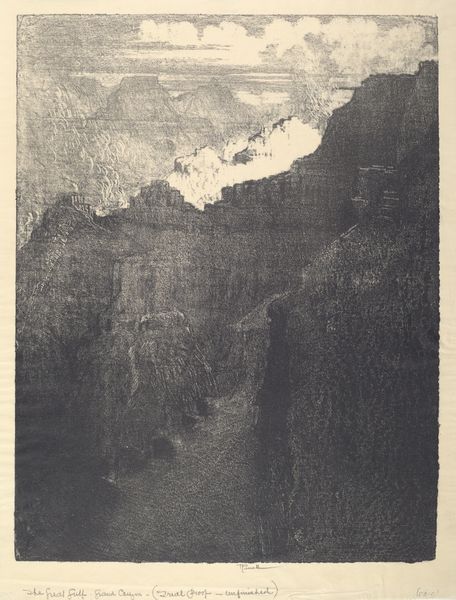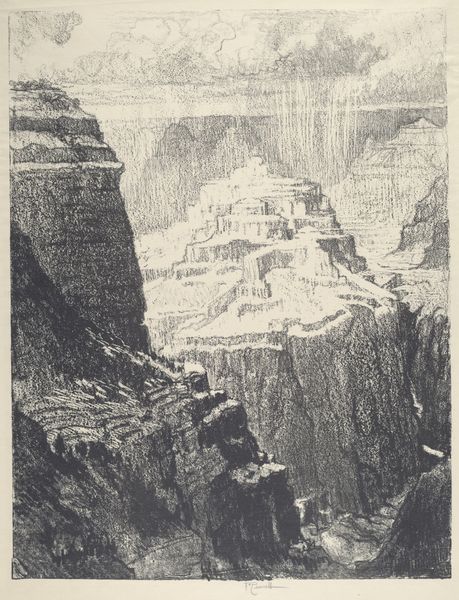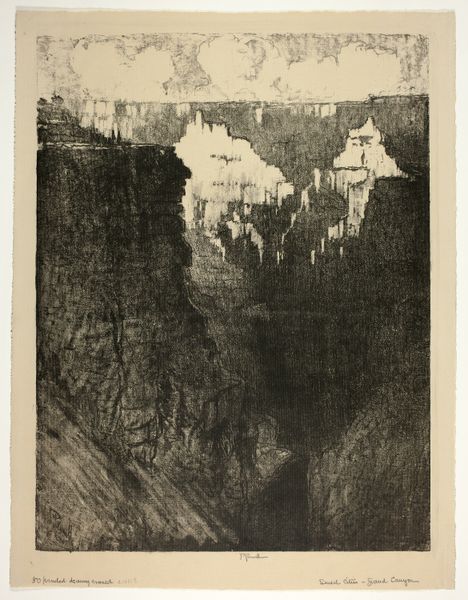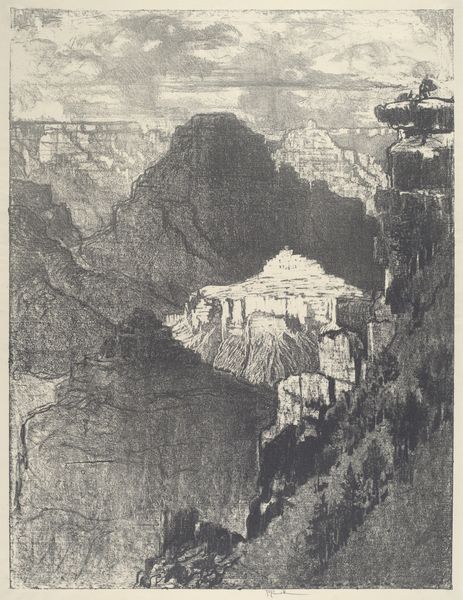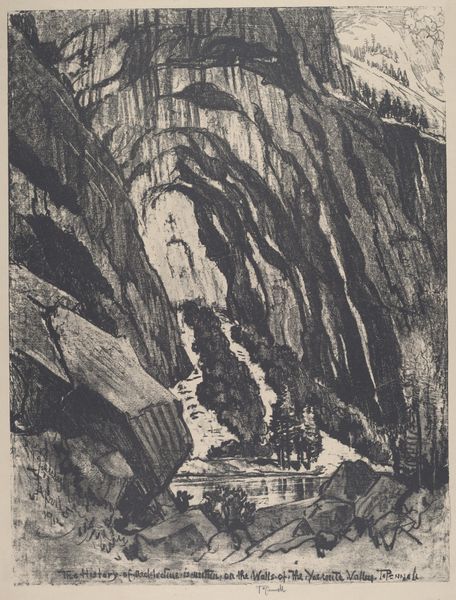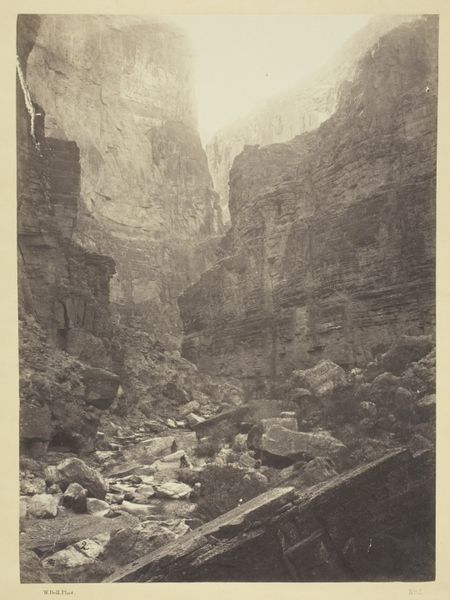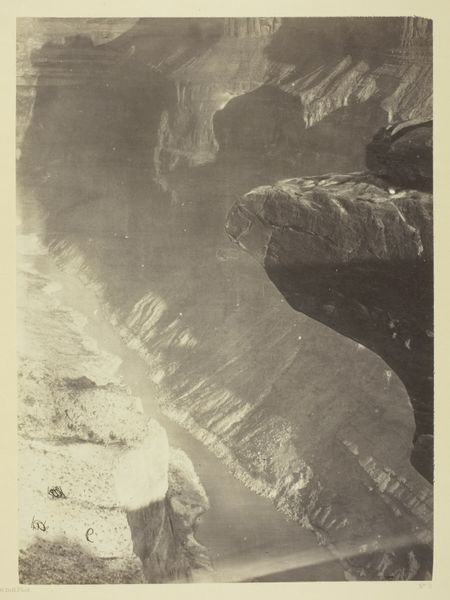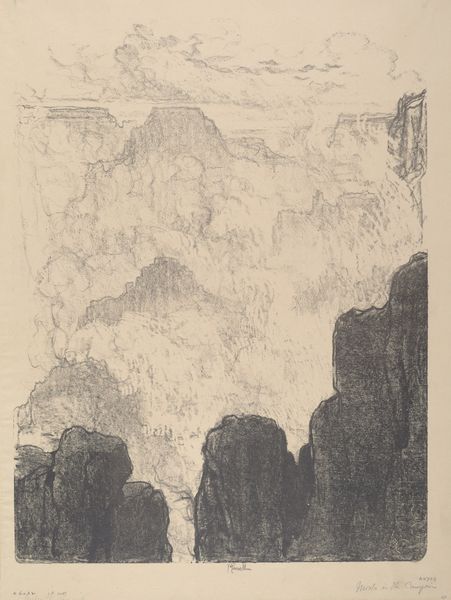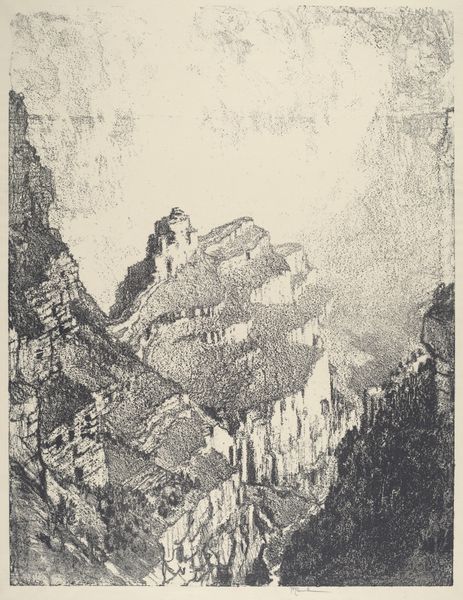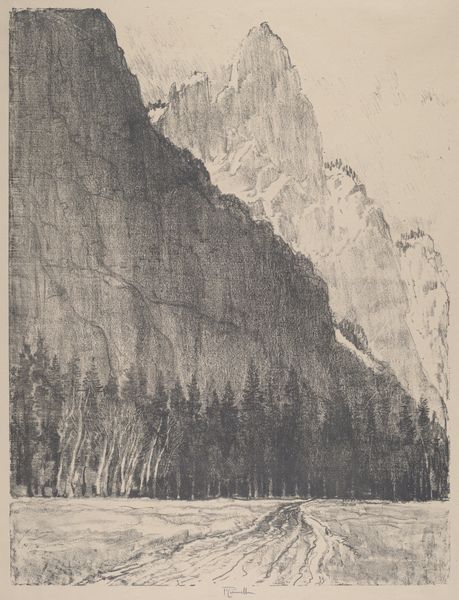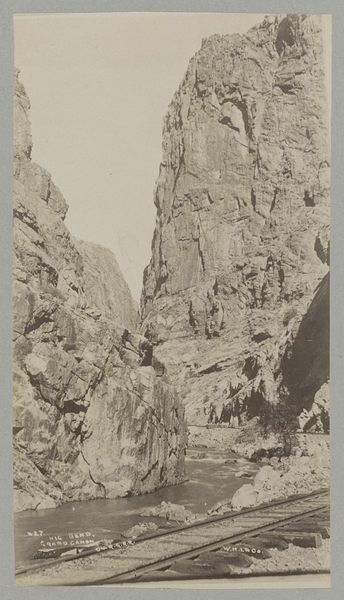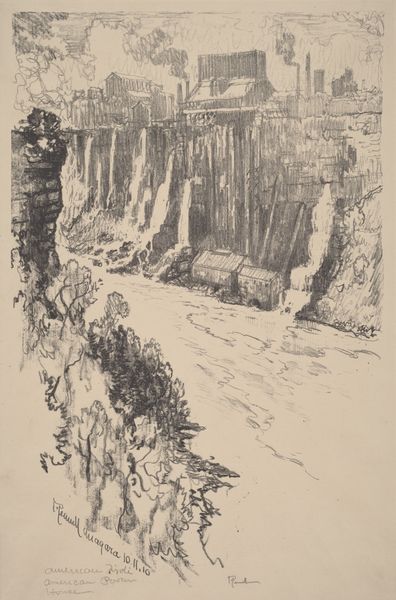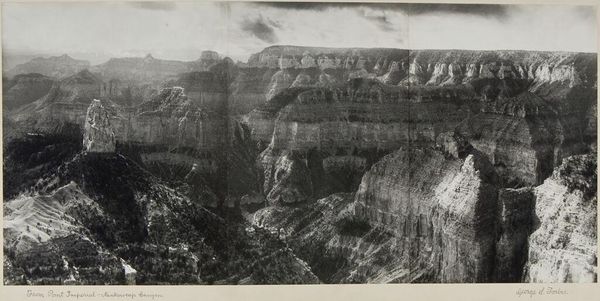
print, etching, graphite
# print
#
etching
#
landscape
#
charcoal drawing
#
graphite
Copyright: National Gallery of Art: CC0 1.0
Editor: Here we have Joseph Pennell’s 1912 etching, "Storm in the Grand Canyon." The textures created through the etching process really give it a dramatic feel. What draws your eye when you look at this piece? Curator: I'm particularly struck by the material evidence of labor in this print. Consider the copper plate itself, likely sourced from industrial production, then the painstaking process of etching—scratching into its surface. What tools did Pennell employ, and how do their specific qualities manifest in the final image? The paper too—its type, weight, and weave all contribute. Editor: That’s a perspective I hadn't fully considered. It does seem that the artist heavily relies on the texture to create such a dramatic scene. How would that technique change if say, another material like wood was employed? Curator: Precisely! A woodcut would necessitate different tools and a different method of mark-making, which would, in turn, dramatically alter the final aesthetic and textural qualities. Further, think of the socio-economic context: who produced the paper and the etching tools? The division of labor, and the class implications inherent in artistic production. Editor: So by understanding the materials and labor involved, we're not just appreciating the aesthetic, but also the entire production process within its historical context. That's a powerful way to view art. Curator: Absolutely. And remember the social consumption - who would have purchased such prints, and why? Examining the production *and* consumption deepens our understanding. Editor: I’ll definitely be paying closer attention to materials from now on. It’s almost like each artwork is a material record of its time. Curator: Exactly! That's the beauty of the materialist approach – it roots art in the real, tangible world.
Comments
No comments
Be the first to comment and join the conversation on the ultimate creative platform.
